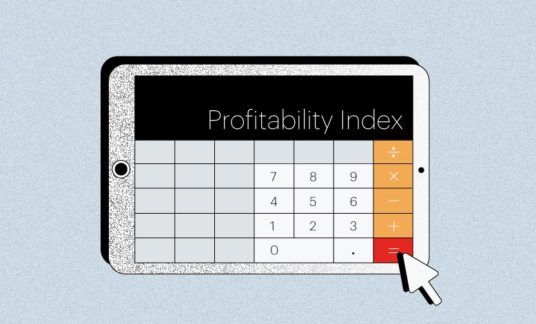For small business owners and entrepreneurs, so much energy is focused on growing the business and generating revenue that business succession planning—deciding who will run your business after your retirement or death—can get pushed down the to-do list. If you’re nearing retirement, you can’t afford to wait any longer.
If retirement is still a long way into the future, creating a business succession plan template is still important. Here’s why it’s so important and the action steps you can take for successful business succession planning.
What Is Business Succession Planning?
Business succession planning is about looking down the road to figure out what will happen to the business once you retire or when you die. What to do with your business generally falls into 1 of 3 categories:
- Sell your business
- Transition ownership and management to a family member or partner
- Transition ownership to family members, but not the management
If you’re planning to sell the business, liquidate the assets or close the doors when you retire, business succession planning might not be a significant factor. However, if you want the business to remain open, succession planning is the way to maintain continuity for your employees and clients or customers.

Why Is Business Succession Planning Important?
Family business owners often see their business as a family legacy. They want the business to continue to prosper and stay in the family long after they are gone.
Choosing a successor will help simplify the transition, whenever it occurs. It gives owners time to train and provide guidance for the next leader or owner. It gives employees and customers peace of mind that the business will continue to move forward. Stakeholders, investors and lenders will have confidence there’s a plan in place to meet obligations and maximize their investment.
There are other family or small business succession planning strategies that can impact the bottom line.
Debt Obligations
Businesses that have loans or lines of credit to operate the business might face a crisis if the business owner leaves the business and a successor hasn’t been put in place. A business succession plan should also consider how debt must be managed. For example, lenders may have the right to call in outstanding loans and force repayment upon a business owner’s death. If a plan isn’t in place when that happens, the business could be in jeopardy.
Tax Considerations
When a business changes hands, decisions that are made can have a significant impact on taxes. A well-defined business succession plan can minimize the tax consequences when ownership or control of the company transfers to a successor.
The 2010 Tax Relief Act and the Tax Cuts and Jobs Act of 2017 allow for ways to reduce a business owner’s potential tax liability, with careful planning.

Choosing a Successor
One of the most critical decisions in family business succession planning is picking a successor. It might sound easy, but many families have been torn apart over family business succession decisions when one family member is selected over another. If there are multiple stakeholders or partners, selecting one partner over another can also cause problems.
When making the decision, set the criteria for how you will evaluate any candidates. Try to be as objective as possible and pick the person you think will have the best interests of the business at heart.
It’s not about picking someone who will operate your business exactly as you did or would, but the person best equipped to build on your legacy and ensure the business moves forward.
Choosing a Timeline
While a business succession plan can play out over several years, it should have a timeline of when the transition will take place. You want enough time to provide the successor to gain an in-depth understanding of business operations and for you to pass on the knowledge needed. In many cases, this can take 6-24 months.
If the successor already has been working in the business, a shorter time frame might be sufficient. Be wary of creating a transition period that’s too long because it can dissuade potential successors or leaders who might not be willing to wait.
A firm date isn’t necessary for the early stages of business succession planning. Instead, establish a series of milestone events. This allows for business succession planning to provide an orderly transition as these milestones are met. When all of the milestones are complete, the final transition should occur.
Valuing the Business
You need to have an accurate assessment of the current value of your business as you build your succession plan—especially if there are multiple family members, partners or stakeholders. The value plays a part in tax obligations as the transition takes place.
There are several ways to figure business valuations, including asset-based valuation methods, financial performance/earning value valuation methods and comparable worth valuations methods. For the sake of objectivity, it’s best to get an outside analysis of your business valuation to document the value for your successor.

Drawing Up the Business Succession Plan
Creating the business succession plan means breaking down the key components into 4 areas:
The Strategic Plan
Your strategic plan is the guiding document for your business and outlines your vision. It tells current and future employees what core values you believe are important while setting short-term and long-term goals.
This gives your successor insight into how you see things and allows them to build (or even alter) the plan in the future.
The Stakeholder Plan
If ownership stays in the family or transitions to a group of stakeholders, you should define the roles each will play after the transition occurs.
The Estate Plan
A well-crafted estate plan can minimize your tax obligations and reduce the burden on your business, heirs or successors. Poor decision-making here can have huge implications.
There are a variety of ways to structure the succession, including:
- Gifting
- Family limited partnerships
- Self-canceling installment notes
- Private annuities
- Buy-sell agreements
- Grantor-retain annuity trusts
- Separate-share trust (S Corps)
- Intentionally defective grantor trust (IDGT)
As you can see, it can get complicated. Go to your attorney and financial advisers with any business succession planning questions to determine the best way to craft your estate plan and succession.
The Succession Plan
Those 4 small business planning strategies are part of the overall business succession plan, which clarifies how the transition will be carried out.
A succession plan will detail the “how” and “when,” including what constitutes each milestone. For example, a business owner might want to remain responsible for long-term planning but turn over daily operations when they believe the successor is ready.
To ensure you clearly address the various components of this plan, you can download a free business succession plan template from an online source, such as SampleTemplates.
The clearer — and more specific — the plan is, the more likely it will succeed.
Communicating the Plan
Once the decisions have been made, the next step is to communicate the plan with employees, family members, stakeholders and key customers. This gives you a chance to explain your decision and mitigate any concerns that could arise.
The business succession plan can be especially helpful if owners or leaders are remaining active during the transition. For example, if you’ve turned over the day-to-day operations, communication with customers is crucial so they respect the decision rather than doing business-as-usual.
A Successful Business Succession Plan Requires Careful Planning
The ramifications of the plan can have an impact long after you exit the business. A clear success plan can help ensure a smooth transition and minimize disruption to business operations.










